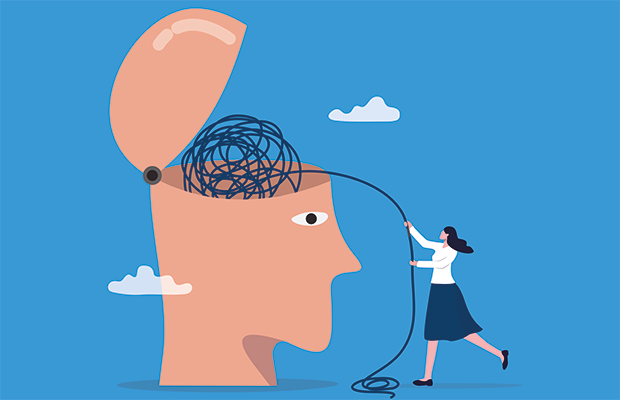Psychology AQA paper 1- revision
Scroll to see replies
Well basically
Asocial stage (0-6 weeks)
This stage is where the baby does not show difference between humans and objects both produce favourable reaciton such as smiling.
Indiscriminate attachment ( 6weeks - 7montsh)
This is where the infants indiscriminately enjoy human company and most babies respond equally to any caregiver. Also after 3 months the baby does show distress if the human doesn't interact with them.
Specific Attachment (7months- 9months)
This is where the baby shows favor over one person. It shows fear of strangers (stranger fear) and unhappiness when separated from a special person (separation anxiety). Studies have shown that the baby attaches primarly to the mother (65%) and fathers were 3% but a joint attachment was 30%.
Multiple Attachment (10months onwards)
The study showed that the majority of babies attached to other people one month after primary attachment. By 18 months the majority of infants have form multiple attachments. These were formed with people who were most reciprocal.
Hope that helps xx
Asocial (0-3 Months) = Infants are attracted to all humans.
Indiscriminate ( 3-8 Months)= Discrimination occurs but strangers are still smiled at.
Discriminate (8 + Months)= Specific attachments formed and stranger anxiety grows.
Multiple (9 Months onwards)= Multiple attachments start to form.
Thanks
Asocial stage (0-6 weeks)
This stage is where the baby does not show difference between humans and objects both produce favourable reaciton such as smiling.
Indiscriminate attachment ( 6weeks - 7montsh)
This is where the infants indiscriminately enjoy human company and most babies respond equally to any caregiver. Also after 3 months the baby does show distress if the human doesn't interact with them.
Specific Attachment (7months- 9months)
This is where the baby shows favor over one person. It shows fear of strangers (stranger fear) and unhappiness when separated from a special person (separation anxiety). Studies have shown that the baby attaches primarly to the mother (65%) and fathers were 3% but a joint attachment was 30%.
Multiple Attachment (10months onwards)
The study showed that the majority of babies attached to other people one month after primary attachment. By 18 months the majority of infants have form multiple attachments. These were formed with people who were most reciprocal.
Hope that helps xx
Thanks helped a lot xx
70% secure
20% insecure avoidant
and 10% insecure resistant
but I've seen a lot of people saying 70% secure and 15% for the other two, does this make any difference in the exam?
70% secure
20% insecure avoidant
and 10% insecure resistant
but I've seen a lot of people saying 70% secure and 15% for the other two, does this make any difference in the exam?
I used 3 textbooks with my students, 1 says 70, 15, 15 and two say 70, 20 15.
Your choice.
Yes that's fine.
You wouldn't get a mark for only putting down the date with no content.
Your choice.
okay thank you

You wouldn't get a mark for only putting down the date with no content.
Thank you!
and the ppt, explains how to answer essay questions.
I'm using the green haired girl book.
I just hope the 12 or 8 markers that l revise will come up and l dont mess them up👎🏾
I'm using the green haired girl book.
That book helps ALOT of people, and don't worry about the stats, there are many...millions of us sitting the exam, we're not bound to put the same stats down.
Just as long as it's a realistic stat, it's okay.👍🏾
Also i would appreciate infor about attachment on future relationships and the depth you have gone into! Pleas help!
Thank Youuu
Just as long as it's a realistic stat, it's okay.👍🏾
Guys...for the Green haired book there is barely anything about fathers...what would you do if a 12 marker came about it? TAHST WOULD BE THE WORST CASE SCENARIO, SO IF FATHER DOES COME UP, REMEMBER ME SILENTLY DYING DURING THE EXAM!!! Please give me some info abotu fatther if you could.
ALSO, the green book Bucharest EI study is wrong, accoridng to my teacher, look at the official webste for the study where it has the correct one
ps sorry about the poor typing i am trying to revise harddd at the same time
However, the quality of fathers play was related to quality of adolescent attachment, suggesting fathers have a different role in attachment - One to do with play and stimulation, and less to do with nurturing.
An evaluation point is if Fathers have a distinct role, why aren't children without Fathers any different? Grossman found they are important, however Macallum and Golombok found children growing up in single parent or same sex families don't develop any differently from children growing up in two parent heterosexual families. This would suggest the Father is not important in attachment.
Hope this helps

ALSO, the green book Bucharest EI study is wrong, accoridng to my teacher, look at the official webste for the study where it has the correct one
ps sorry about the poor typing i am trying to revise harddd at the same time
My teacher gave us all the possible questions that could come up as 12 markers and role of the Father wasn't one of them. I don't think there is enough information anywhere about it and would have thought if a question comes up the maximum it will be is 6 marks.
Everyone using the green haired girl book will be in the same boat if it does come up as a 12 marker at least, but i don't think it would be.
However, the quality of fathers play was related to quality of adolescent attachment, suggesting fathers have a different role in attachment - One to do with play and stimulation, and less to do with nurturing.
An evaluation point is if Fathers have a distinct role, why aren't children without Fathers any different? Grossman found they are important, however Macallum and Golombok found children growing up in single parent or same sex families don't develop any differently from children growing up in two parent heterosexual families. This would suggest the Father is not important in attachment.
Hope this helps

Thank You, im greatful that you replied. However,I have the same book and find that the book does not come to a conclusion if whether they are or arent important. Jst that they have different roles.
Also, is that what you would write for say a 12 marker?
ok just read your new post,, thanks for the reassurancew!!!1 pheew
Quick Reply
Related discussions
- A-level Exam Discussions 2024
- GCSE Exam Discussions 2024
- How do you learn content faster for Psychology?
- A-level Psychology Study Group 2022-2023
- A Level Exam Discussions 2023
- questions in the 2023 paper psychology paper 1
- aqa a level psychology 2024
- AQA A Level Psychology Paper 1 (7182/1) - 17th May 2024 [Exam Chat]
- A-level Psychology Study Group 2023-2024
- psychology flashcards?
- best way to revise for a level psychology (AQA)?
- AQA past papers - Psych, Soc, Eng. Lang
- AQA psychology study group for 2024 exams
- AQA A-Level Psychology Support for 2024 exams
- A Level AQA Psychology, Sociology, Politics tips ?
- AQA A Level Psychology Paper 3 (7182/3) - 3rd June 2024 [Exam Chat]
- Revision Struggles?! Join the 2023 TSR All Day Revision Thread!
- Are 6-9 weeks sufficient to get A’s and an A*?
- Current Year 11 Official Thread (2022-2023)!
- A level exams leaked????
Latest
Last reply 1 minute ago
Should I accept my offer at LCF or wait another year and apply for CSM again?Last reply 3 minutes ago
GCSE geography case studies CIE -urgent help neededLast reply 6 minutes ago
Is it really such a bad thing to have an undefined relationshipLast reply 9 minutes ago
University of Oxford 2025 Undergraduate Applicants Official ThreadLast reply 10 minutes ago
Best SEO Service Company In USALast reply 13 minutes ago
Worried about the acceptance of my A level Qualifications. Need an answerLast reply 14 minutes ago
Name a country or city with the last letter of the previous one7298
Last reply 15 minutes ago
Amazon Project management apprenticeship 2024Last reply 27 minutes ago
SQA Higher Physics - Paper 2 - 25th April 2024 [Exam Chat]Trending
Last reply 4 days ago
OCR A-LEVEL PSYCHOLOGY PAPER 3 (H567/03) - 3rd June [Exam Chat]Last reply 4 days ago
OCR A-LEVEL PSYCHOLOGY PAPER 2 (H567/02) - 22nd May [Exam Chat]Last reply 1 week ago
AQA A Level Psychology Paper 3 (7182/3) - 3rd June 2024 [Exam Chat]Last reply 1 week ago
AQA A Level Psychology Paper 1 (7182/1) - 17th May 2024 [Exam Chat]Last reply 1 week ago
EDEXCEL A-LEVEL PSYCHOLOGY (9PS 01) - 17th May [Exam Chat]Last reply 2 weeks ago
AQA A Level Psychology Paper 2 (7182/2) - 22nd May 2024 [Exam Chat]Last reply 3 weeks ago
Edexcel GCSE Psychology Papers 1 & 2 - 19th & 26th May 2023 [Exam Chat]Last reply 1 month ago
AQA A-level Psychology Paper 2 (7182/2) - 25th May 2023 [Exam Chat]Last reply 1 month ago
Edexcel A-level Psychology Paper 1 (9PS0 01) - 19th May 2023 [Exam Chat]Last reply 1 month ago
What is your Method to remembering AO3 Evaluation Points in Psychology?Posted 1 month ago
Marking AQA a-level Psychology Essay: Evaluate and outline the social learning theoryLast reply 2 months ago
AQA A-level Psychology Paper 3 (7182/3) - 5th June 2023 [Exam Chat]Trending
Last reply 4 days ago
OCR A-LEVEL PSYCHOLOGY PAPER 3 (H567/03) - 3rd June [Exam Chat]Last reply 4 days ago
OCR A-LEVEL PSYCHOLOGY PAPER 2 (H567/02) - 22nd May [Exam Chat]Last reply 1 week ago
AQA A Level Psychology Paper 3 (7182/3) - 3rd June 2024 [Exam Chat]Last reply 1 week ago
AQA A Level Psychology Paper 1 (7182/1) - 17th May 2024 [Exam Chat]Last reply 1 week ago
EDEXCEL A-LEVEL PSYCHOLOGY (9PS 01) - 17th May [Exam Chat]Last reply 2 weeks ago
AQA A Level Psychology Paper 2 (7182/2) - 22nd May 2024 [Exam Chat]Last reply 3 weeks ago
Edexcel GCSE Psychology Papers 1 & 2 - 19th & 26th May 2023 [Exam Chat]Last reply 1 month ago
AQA A-level Psychology Paper 2 (7182/2) - 25th May 2023 [Exam Chat]Last reply 1 month ago
Edexcel A-level Psychology Paper 1 (9PS0 01) - 19th May 2023 [Exam Chat]Last reply 1 month ago
What is your Method to remembering AO3 Evaluation Points in Psychology?Posted 1 month ago
Marking AQA a-level Psychology Essay: Evaluate and outline the social learning theoryLast reply 2 months ago
AQA A-level Psychology Paper 3 (7182/3) - 5th June 2023 [Exam Chat]



